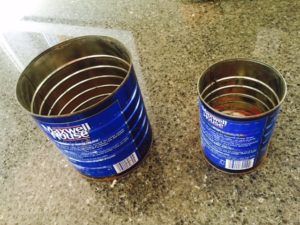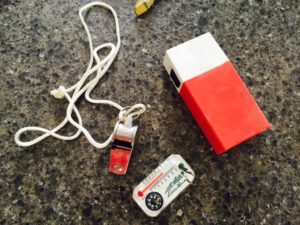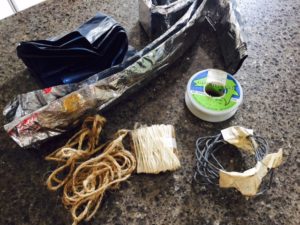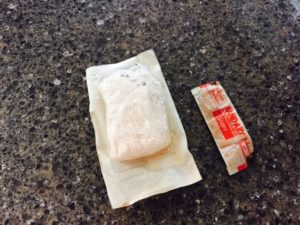My 7th grade academic year included, courtesy of a forward-thinking social studies teacher, a month-long unit on emergency preparedness. We researched different kinds of disasters, gave presentations on how to prepare for these disasters, and wrote papers about how to respond to the less serious and survive the potentially devastating.
Most memorably, however, we assembled our own survival kits and then put them to use in (what felt like) a vast forest on a cold, wet, November morning. Under adult supervision we built shelters, bandaged fictional wounds, started fires, and “survived” on the food and drink packed in our kits.
Fast forward 24 years… Last month, while visiting my parents in Wisconsin, my sister and I volunteered to clean out their garage. Hidden among piles of dusty, dirty sports equipment and gardening tools, tucked away on a top shelf, and still in its original waterproof Maxwell House coffee can, we found my survival kit.
When the garage project wrapped, I took the kit inside and dumped its contents out on the dining room table. Each item brought me back to that 7th grade project and prompted a discussion with my own elementary school-aged kids about why I chose to include it, given the limited real estate in my coffee can.




My kit also held a needle and thread, a pocket knife, fishing hooks, an eye glass (for starting fires), bouillon and sugar cubes, tea bags, matches in a waterproof container, candles, and last but not least, $0.50 to make a pay phone call. (At this point I had to pause and explain pay phones to my kids.)
Impressively, because of what my teacher had taught us during the emergency preparedness unit, I had packed my kit in such a way that almost 25 years later nearly every item still had life – and the potential to save a life – left in it.
September is National Preparedness Month. At some point this month, set aside an afternoon, or even just an hour or two, to prepare your home and family by researching the most commonly occurring disasters in your area and assembling an emergency preparedness kit (or two!) according to your specific needs. Place your kits in your home and vehicle, and make sure everyone in your family knows where to find them.
Hopefully you’ll never need your kits. Perhaps you’ll find them 25 years from now, still stocked and ready to save a life, in the truck of your car or on a shelf in your garage. But if you do need your kits, that afternoon spent gathering flashlights, batteries, nonperishable foods, bottled water, and first aid supplies will have been well spent.
Click here for additional information about how to prepare your home and family for emergencies.
